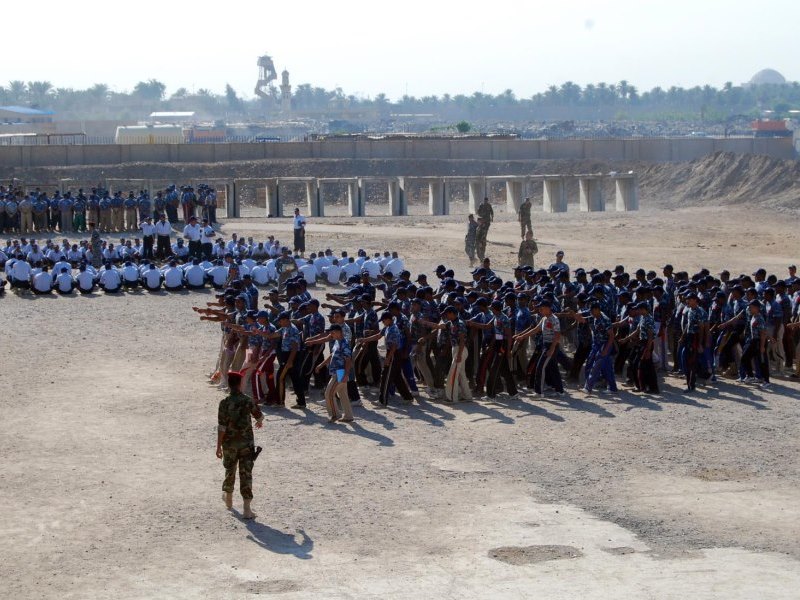 Iraqi police trainees at the at the al Furat Iraqi Police Training Center. Photo: Herald Post, Flickr.
Iraqi police trainees at the at the al Furat Iraqi Police Training Center. Photo: Herald Post, Flickr.
In the aftermath of the fall of Mosul to ISIS in June 2014 and following a fatwa issued by Grand Ayatollah Ali al-Sistani, a new militia umbrella group, al-Hashd al-Shaabi (Popular Mobilisation Forces or PMF), was created, comprising between 50 and 70 separate militias owing their allegiances to at least three different organisations. A number of failed attempts have since been made to institutionalise the PMF as an arm of the Iraqi state.
Against this background, this project examined the ability of the GoI to control the PMF and to realise its goal of integrating this group into Iraq’s mainstream security forces as well as its command and control structures. The project mapped the evolution of the PMF from 2014 onwards and examines the organisational coherence of each of the PMF's composite groups and their relationship to their patrons as well as to the GoI. Using the example of militia demobilisation elsewhere but also the case of Iraqi militia demobilisation after 2007, this project assessed the incentives that the GoI could deploy to demobilise al-Hashd al-Shaabi over the medium term.
This project formed part of the Conflict Research Programme, funded by the UK Department for International Development to provide research and policy advice on how the risk and impact of violent conflict might be more effectively reduced through development and governance interventions.
Project Outputs
Research Team
Hayder Al-Khafaji | Principal Investigator
Hayder is a researcher on Middle Eastern affairs at the Al-Bayan Center for Planning and Studies, with a specialist focus on Iraq–Iran relations.